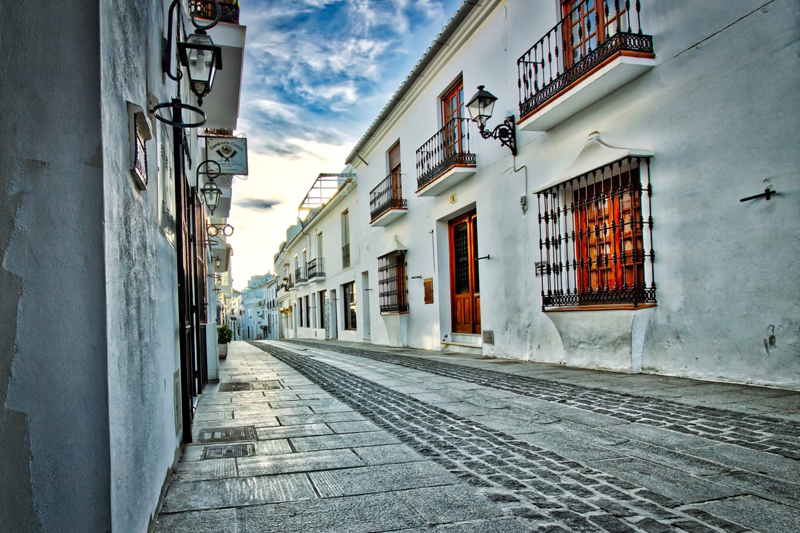El fin de las vacaciones – Spanish articles

After having read the article El fin de las vacaciones – Listening and reading and listened to the monologue “El fin de las vacaciones” and its list of vocabulary, you can find below some grammar explanations and notes. As you can see below, the text has been divided and lines have been assigned a number, to find words easily.
“El fin de las vacaciones” transcript:
1 Bueno... Es septiembre. Estamos en septiembre.
2 Y el verano termina. El verano se va.
3 Adiós a agosto, al calor, a los días más largos, a los días con más luz.
4 A partir de ahora, los días son más cortos.
5 Y también, a partir de ahora, el tiempo cambia. Poco a poco, las temperaturas bajan.
6 Adiós a las vacaciones. Es el fin de las vacaciones.
7 Los estudiantes vuelven al colegio o a la universidad. Los trabajadores vuelven a sus trabajos.
8 Pero el fin del verano no es malo.
9 La gente está más descansada, y todos ven de nuevo a sus compañeros de colegio o de trabajo.
10 Dentro de poco llega el otoño. El otoño también es una estación bonita. ¿Por qué no?
11 A mí me gusta el otoño.
Grammar Point: Spanish Definite and Indefinite Articles
All lines, except line No. 1, have some words in red. All those words are definite articles. And all of them correspond to the English definite article “the”.
But, how is that possible? Several Spanish words correspond to just one English word? Yes. The reason for that is the gender (masculine and feminine) of Spanish words. If the word (noun) the Spanish article is preceding is masculine, we’ll use the corresponding masculine article. And same for the feminine.
Look at this table:
So, for example, let’s take a look at line number 2:
2 “Y el verano termina. El verano se va.”
The substantive (noun) “verano” (“summer”) is a masculine, singular noun in Spanish. That’s why the article preceding “verano” is “el”.
Imagine we change this sentence to plural:
“Y los veranos terminan. Los veranos se van.”
Here, we can see the singular article “el” has changed to “los”, as “veranos” is now a masculine, plural noun. You can also notice there are more changes: “verano” ends in “-s” for the plural. Also, the verb “termina” in singular, changes to its plural: “terminan”.
Apart from the definite articles, there is another classification: Indefinite articles.
The only sentence in the text containing an indefinite article (in green) is line number 10:
10 “(…). El otoño también es una estación bonita. ¿Por qué no?”
“Una” is a feminine, singular indefinite article. It is feminine because the noun “estación” is feminine. The plural of “una estación” is “unas estaciónes”.
Some notes…
Take a look at lines 3, 7 and 8:
3 “Adiós a agosto, al calor, (…).”
7 “Los estudiantes vuelven al colegio o a la universidad. (…).”
8 “Pero el fin del verano no es malo.”
Words “al” and “del” are contractions:
al = a + el
del = de + el
To learn more about Spanish definite and indefinite articles:
Spanish definite articles pronunciation: Watch the video
Spanish indefinite articles pronunciation: Watch the video
“El fin de las vacaciones” transcript:
1 Bueno... Es septiembre. Estamos en septiembre.
2 Y el verano termina. El verano se va.
3 Adiós a agosto, al calor, a los días más largos, a los días con más luz.
4 A partir de ahora, los días son más cortos.
5 Y también, a partir de ahora, el tiempo cambia. Poco a poco, las temperaturas bajan.
6 Adiós a las vacaciones. Es el fin de las vacaciones.
7 Los estudiantes vuelven al colegio o a la universidad. Los trabajadores vuelven a sus trabajos.
8 Pero el fin del verano no es malo.
9 La gente está más descansada, y todos ven de nuevo a sus compañeros de colegio o de trabajo.
10 Dentro de poco llega el otoño. El otoño también es una estación bonita. ¿Por qué no?
11 A mí me gusta el otoño.
Grammar Point: Spanish Definite and Indefinite Articles
All lines, except line No. 1, have some words in red. All those words are definite articles. And all of them correspond to the English definite article “the”.
But, how is that possible? Several Spanish words correspond to just one English word? Yes. The reason for that is the gender (masculine and feminine) of Spanish words. If the word (noun) the Spanish article is preceding is masculine, we’ll use the corresponding masculine article. And same for the feminine.
Look at this table:
SPANISH DEFINITE ARTICLES
| (English “the”) | Masculine | Feminine |
| Singular | el | la |
| Plural | los | las |
So, for example, let’s take a look at line number 2:
2 “Y el verano termina. El verano se va.”
The substantive (noun) “verano” (“summer”) is a masculine, singular noun in Spanish. That’s why the article preceding “verano” is “el”.
Imagine we change this sentence to plural:
“Y los veranos terminan. Los veranos se van.”
Here, we can see the singular article “el” has changed to “los”, as “veranos” is now a masculine, plural noun. You can also notice there are more changes: “verano” ends in “-s” for the plural. Also, the verb “termina” in singular, changes to its plural: “terminan”.
Apart from the definite articles, there is another classification: Indefinite articles.
SPANISH INDEFINITE ARTICLES
| Masculine | ||
| Singular (English “a”) | ||
| Plural (English “some”) |
The only sentence in the text containing an indefinite article (in green) is line number 10:
10 “(…). El otoño también es una estación bonita. ¿Por qué no?”
“Una” is a feminine, singular indefinite article. It is feminine because the noun “estación” is feminine. The plural of “una estación” is “unas estaciónes”.
Some notes…
Take a look at lines 3, 7 and 8:
3 “Adiós a agosto, al calor, (…).”
7 “Los estudiantes vuelven al colegio o a la universidad. (…).”
8 “Pero el fin del verano no es malo.”
Words “al” and “del” are contractions:
al = a + el
del = de + el
To learn more about Spanish definite and indefinite articles:
Spanish definite articles pronunciation: Watch the video
Spanish indefinite articles pronunciation: Watch the video
You Should Also Read:
El fin de las vacaciones – Listening and reading

Related Articles
Editor's Picks Articles
Top Ten Articles
Previous Features
Site Map
Content copyright © 2023 by Angeles Fernández. All rights reserved.
This content was written by Angeles Fernández. If you wish to use this content in any manner, you need written permission. Contact Angeles Fernandez for details.






